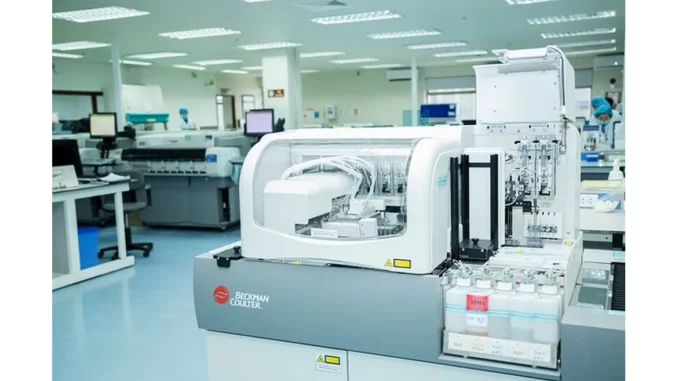
In an era characterised by rapid advancements in healthcare technologies, the hematology market emerges as a beacon of substantial growth. From a valuation of USD 15.2 billion in 2022, it is poised to expand to a staggering USD 26.3 billion by 2031, representing a compound annual growth rate (CAGR) of 7.2% between 2024 and 2031. To understand the implications of this growth and the factors driving it, I engaged with Dr Sarah Langford, a distinguished expert in hematology. Her insights offer a comprehensive perspective on the dynamics propelling the market forward.
Meeting Dr Langford in a lively café, her composed demeanour and expertise were immediately apparent. “Hematology is at a transformative juncture,” she began, easing into our discussion with the warmth of a cup of herbal tea in her hands. “Advancements in molecular biology and genomics are revolutionising our approach, enabling precise diagnosis and treatment of blood disorders.” This precision is powered by state-of-the-art hematology instruments and analyzers, which Dr Langford identifies as critical to market expansion. “These technologies facilitate automated diagnostics that are both rapid and highly accurate,” she elaborated. “Such innovations are vital, particularly in the context of increasing cases of blood-related ailments like anaemia and leukaemia.”
The dialogue naturally progressed to the segmentation of the hematology market, a topic on which Dr Langford was particularly insightful. “Understanding market segments is crucial to appreciating the sector’s potential,” she asserted. “Hematology analyzers and flow cytometers, for instance, are fundamental in contemporary laboratories.” She further emphasised the role of reagents, especially coagulation and immuno-hematology reagents, which are indispensable in diagnostic procedures. “These reagents are the unsung heroes,” she remarked with a knowing smile. “Without them, even the most sophisticated analyzers would fall short.”
Hematology’s diverse applications, from drug testing to the diagnosis of autoimmune and infectious diseases, also significantly contribute to market growth. “Each application presents a distinct opportunity for expansion,” Dr Langford noted. “In cancer diagnosis, for example, hematology provides critical insights that inform treatment strategies.” The conversation then shifted to the varied end-users of hematology products, encompassing hospitals, clinical testing institutes, and even patient self-testing. “There’s a notable trend towards decentralised testing,” she observed. “People are becoming increasingly proactive about their health, and advancements in technology are facilitating this shift.”
As our discussion delved deeper into the market’s potential, Dr Langford shared her thoughts on the comprehensive research underpinning market forecasts. “The research process is exhaustive,” she explained, reflecting on the complexities involved. “It integrates both primary and secondary data sources, evaluating everything from governmental regulations to market volatility. This holistic approach enables us to grasp not only our current position but also our future trajectory.”
One of the most engaging aspects of our conversation was an exploration of the challenges and obstacles that the hematology market may encounter. “Every opportunity comes with its challenges,” Dr Langford mused. “While the outlook is promising, regulatory hurdles and the imperative for ongoing innovation remain significant.” Despite these potential barriers, Dr Langford’s optimism was unwavering. “The demand for diagnostic tests continues to rise,” she asserted confidently. “This, coupled with the relentless pace of technological advancements, heralds a bright future for hematology.”
As we approached the end of our conversation, I inquired about what excites Dr Langford most about the market’s growth trajectory. Her answer was immediate and sincere. “It’s the potential to enhance patient outcomes,” she replied, her passion evident. “Ultimately, it’s about making a tangible difference in people’s lives. That’s the real driving force behind our efforts.”
Reflecting on this engaging dialogue, it becomes evident that the hematology market’s path to USD 26.3 billion is not merely about figures and growth rates. It is a narrative of innovation, tenacity, and an unwavering commitment to improving healthcare outcomes. As Dr Langford aptly summarised, “The future is bright, and I, for one, am eager to witness its unfolding.”


Be the first to comment